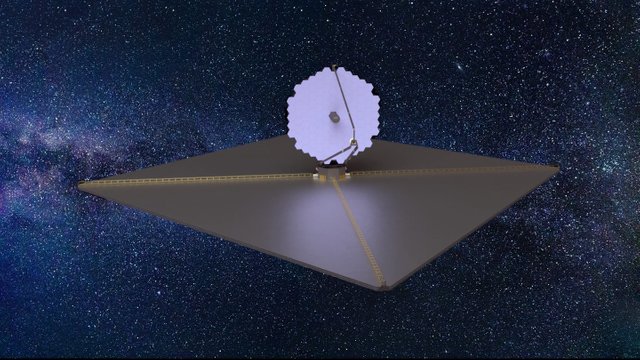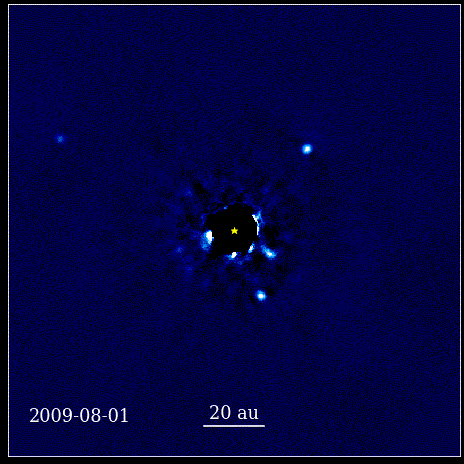
Source
According to NASA estimates and other scientific research, the Milky Way could be home to a staggering 300 million potentially habitable exoplanets. This figure is based on analysis of data collected by the Kepler space telescope and the European Space Agency's Gaia mission, which have allowed astronomers to identify thousands of exoplanets and study their characteristics.
Según estimaciones de la NASA y otras investigaciones científicas, la Vía Láctea podría albergar la asombrosa cantidad de 300 millones de exoplanetas potencialmente habitables. Esta cifra se basa en el análisis de datos recopilados por el telescopio espacial Kepler y la misión Gaia de la Agencia Espacial Europea, que han permitido a los astrónomos identificar miles de exoplanetas y estudiar sus características.
The Habitable Worlds Observatory (HWO) is an ambitious NASA project that aims to be the first space telescope specifically designed to identify and study Earth-like planets in habitable zones around other stars. This observatory will operate in the ultraviolet, optical, and infrared spectra, and its primary goal is to detect and characterize at least 25 potentially habitable worlds.
El Habitable Worlds Observatory (HWO) es un ambicioso proyecto de la NASA que busca ser el primer telescopio espacial, diseñado específicamente para identificar y estudiar planetas similares a la Tierra en zonas habitables alrededor de otras estrellas. Este observatorio operará en los espectros ultravioleta, óptico e infrarrojo, y su objetivo principal es detectar y caracterizar al menos 25 mundos potencialmente habitables.

Source
To accomplish this, HWO will use a coronagraph, an instrument that blocks direct light from a star, allowing direct observation of orbiting planets. In addition to searching for signs of life, the observatory will provide powerful capabilities for transformative discoveries in astrophysics, spanning from our solar system to the distant universe.
Para lograr esto, el HWO utilizará un coronógrafo, un instrumento que bloquea la luz directa de una estrella, permitiendo la observación directa de los planetas que la orbitan. Además de buscar signos de vida, el observatorio proporcionará capacidades poderosas para descubrimientos transformadores en astrofísica, abarcando desde nuestro sistema solar hasta el universo distante.
The HWO design is based on previous studies by the Large Ultraviolet Optical Infrared Surveyor (LUVOIR) and the Habitable Exoplanets Observatory (HabEx). The telescope is expected to have a primary mirror between 6.5 and 8 meters (21.5 to 26.8 feet) in diameter, similar to or slightly larger than that of the James Webb Space Telescope. Unlike the James Webb, which specializes in the mid-infrared, HWO will focus primarily on the near-infrared, visible, and ultraviolet, similar to Hubble.
El diseño del HWO se basa en estudios previos del Large Ultraviolet Optical Infrared Surveyor (LUVOIR) y el Habitable Exoplanets Observatory (HabEx). Se espera que el telescopio tenga un espejo primario de entre 6,5 y 8 metros de diámetro, similar o ligeramente mayor que el del Telescopio Espacial James Webb. A diferencia del James Webb, que se especializa en el infrarrojo medio, el HWO se enfocará principalmente en el infrarrojo cercano, el visible y el ultravioleta, similar al Hubble.

Source
Although the project is still in the development phase, the HWO is expected to be launched in the 2040s and will be located at the L2 Lagrange point, 1.5 million kilometres from Earth. Its construction and launch represent an unprecedented technological challenge, but also a unique opportunity to answer one of humanity's most fundamental questions, as Enrico Fermi would say: Where is everybody?
Aunque el proyecto aún está en fase de desarrollo, se espera que el HWO sea lanzado en la década de 2040 y se ubicará en el punto de Lagrange L2, a 1,5 millones de kilómetros de la Tierra. Su construcción y lanzamiento representan un desafío tecnológico sin precedentes, pero también una oportunidad única para responder a una de las preguntas más fundamentales de la humanidad, como diría Enrico Fermi: ¿Donde están todos?.
Obviously, the main problem is that sending a WhatsApp message to the nearest planet and receiving a reply would take about nine years, so conversations would be a bit boring. But there is no doubt that the discovery of extraterrestrial life would have a profound impact on our understanding of science, philosophy and even religion.
Obviamente el problema principal es que, enviar un whatsap al planeta más cercano y recibir una contestación nos llevaría cerca de nueve años, por lo que las conversaciones serían un poco aburridas. Pero no cabe duda de que el descubrimiento de vida extraterrestre tendría un impacto profundo en nuestra comprensión de la ciencia, la filosofía e incluso la religión.
More information/Más información
https://science.nasa.gov/astrophysics/programs/habitable-worlds-observatory/
¿Dónde están todos?
Una pregunta desafiante para un vasto universo que se dice tener 300 millones de exoplanetas potencialmente habitables.
¿Será que los humanos somos los culpables de tanta soledad y aun no lo sabemos?
Gracias por compartir. Saludos y bendiciones..!
Downvoting a post can decrease pending rewards and make it less visible. Common reasons:
Submit